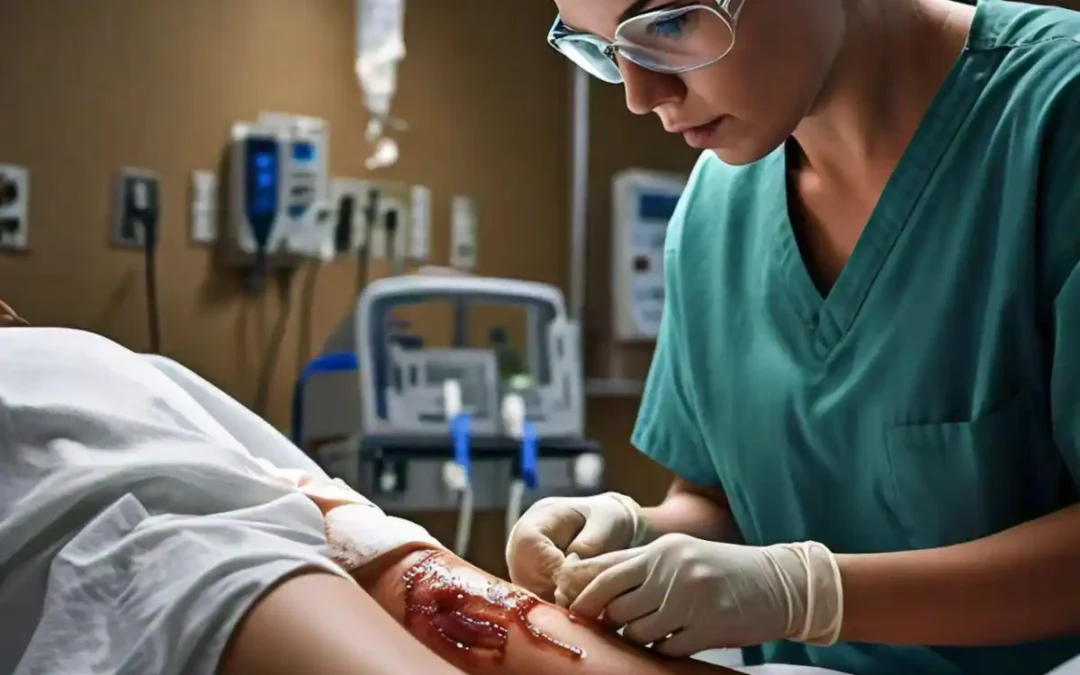Wound care is a critical part of maintaining overall health. Whether it’s a minor scrape or a more serious injury, taking the right steps to treat a wound can prevent infections, promote healing, and avoid complications. In this guide, we’ll walk you through essential tips on how to treat wounds properly and how to prevent infections that could slow down recovery.
Understanding Different Types of Wounds
Wounds can vary greatly in severity, and how you treat them depends on the type. Understanding the differences between acute wounds (those that heal quickly, like cuts and scrapes) and chronic wounds (such as pressure ulcers or diabetic foot wounds that take longer to heal) is key to providing the right care.
- Acute Wounds: These include cuts, abrasions, punctures, and burns that typically heal within a few weeks.
- Chronic Wounds: Conditions like ulcers or infected surgical wounds that persist for months and may require medical attention.
Knowing your wound type can help you choose the right treatment method and prevent infection.
Step-by-Step Wound Care: How to Treat Wounds Properly
Here’s a step-by-step guide to properly caring for a wound, ensuring it heals well and remains free from infection.
Step 1: Clean the Wound
Cleaning the wound is the first and most important step in preventing infection. Use clean water to gently wash the area and remove dirt or debris. Avoid using harsh solutions like hydrogen peroxide, as these can damage tissue and slow down healing.
Step 2: Apply an Antiseptic
Once the wound is clean, applying an antiseptic will help kill any bacteria present and prevent infection. Options like iodine, alcohol, or over-the-counter antibacterial creams are effective in reducing the risk of contamination.
Step 3: Dress the Wound
After cleaning and disinfecting the wound, cover it with a sterile dressing or bandage. Choose a dressing that’s appropriate for the wound size—larger wounds may require gauze, while small cuts may only need adhesive bandages. Change the dressing daily or whenever it becomes wet or dirty.
Step 4: Monitor for Infection
Keep an eye on the wound as it heals. If you notice signs of infection, such as redness, swelling, warmth, or pus, take action immediately. Early detection can prevent the infection from spreading and becoming more severe.
Common Causes of Wound Infections
Infections occur when bacteria enter the wound, and several factors can contribute to this:
- Bacterial Contamination: Dirt, debris, or foreign objects in the wound can introduce bacteria that lead to infection.
- Poor Wound Hygiene: Failing to clean the wound or change the dressing regularly increases the risk of infection.
- Delayed Treatment: The longer a wound is left untreated, the higher the chance of infection. Always address wounds promptly.
By understanding the causes of infections, you can take proactive steps to avoid them.
How to Prevent Wound Infections
Preventing infections is crucial for the proper healing of wounds. Follow these tips to minimize the risk:
Maintaining Proper Hygiene
Before and after treating a wound, wash your hands thoroughly with soap and water. Wearing sterile gloves is also a good idea if you’re treating a wound on someone else.
Choosing the Right Dressing
The type of dressing you use matters. For minor wounds, a simple adhesive bandage may suffice, but for larger wounds, you might need breathable, sterile gauze pads. Be sure to keep the dressing dry and replace it regularly to avoid bacterial growth.
Antibiotics and Antiseptics
Over-the-counter antibiotic ointments like Neosporin can help prevent infections, but they should be used as directed. Antiseptics like hydrogen peroxide or iodine can also be useful for disinfecting a wound, but be cautious about overuse, as they may irritate healing skin.
When to See a Doctor
If you notice signs of infection like excessive redness, swelling, warmth, pus, or if you develop a fever, seek medical help. Serious wounds, particularly deep cuts or wounds caused by dirty objects, may require professional treatment such as stitches or a tetanus shot.
Signs of Infection and When to Seek Medical Attention
It’s essential to monitor the wound closely for signs of infection. These can include:
- Increased redness or swelling around the wound.
- Pain that worsens over time instead of improving.
- Warmth around the wound site.
- Discharge of pus or foul-smelling fluid.
- Fever or chills.
If you experience any of these symptoms, it’s time to see a healthcare professional. Early intervention can prevent the infection from becoming severe or spreading.
Top Products for Wound Care and Infection Prevention
There are plenty of products available that make wound care easier and more effective. Some recommended items include:
- Sterile Gauze Pads: Ideal for larger wounds that need frequent dressing changes.
- Adhesive Bandages: For smaller cuts and scrapes.
- Antibacterial Ointments: Such as Neosporin or Polysporin to prevent infections.
- Antiseptic Wipes or Solutions: To clean wounds before applying a dressing.
These products are easy to find in most pharmacies and should be part of any basic first aid kit.
Conclusion
Proper Wound care is essential in preventing infections and ensuring that wounds heal correctly. By following these steps—cleaning the wound, applying antiseptics, using the right dressing, and monitoring for infection—you can promote faster healing and avoid complications. If a wound shows signs of infection, don’t hesitate to seek professional medical attention to prevent further issues.
FAQs About Wound Care
How often should I change my wound dressing?
Dressing should be changed daily or whenever it becomes wet or dirty.
Can I shower with an open wound?
It’s best to cover the wound while showering to avoid water contamination. Waterproof dressings can help.
What should I do if my wound is not healing?
If a wound isn’t healing after a couple of weeks, or shows signs of infection, seek medical advice. Chronic wounds may require advanced treatment.

